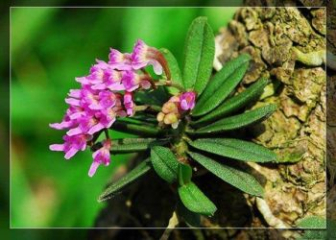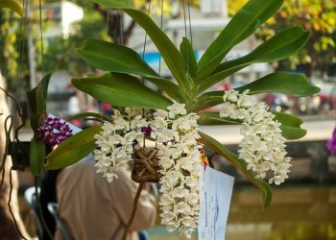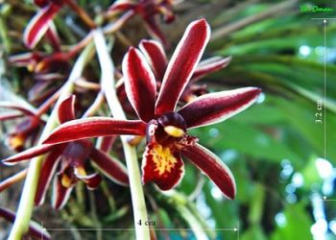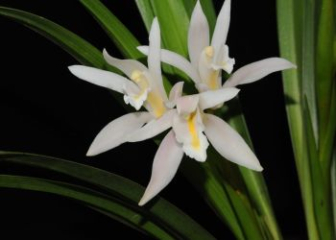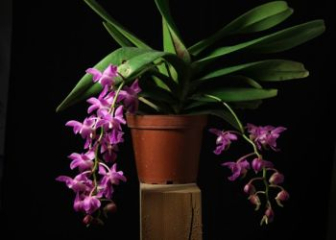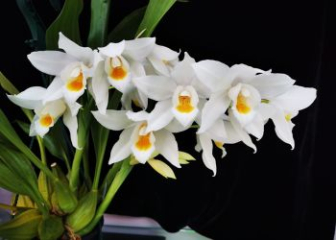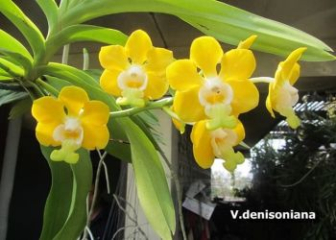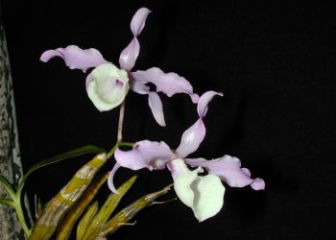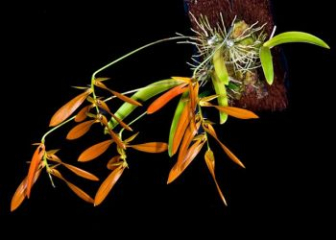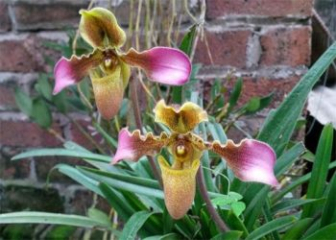Dendrobium Ngoc Truc Orchid – A Wild Orchid with Elegant Beauty
Blog | by
Dendrobium Ngoc Truc orchid (Dendrobium moniliforme) is a species of wild orchid belonging to the Dendrobium genus. Its flowers are pure white or soft pinkish-white, exuding a gentle and refined charm with a light fragrance.
Dendrobium Ngoc Truc orchid (scientific name: Dendrobium moniliforme) is currently one of the most beloved wild orchids thanks to its elegant appearance, delicate scent, and excellent adaptability to Vietnam’s climate.
In this article, let’s join Forest Orchids to explore in depth the origin, characteristics, as well as planting and care techniques for the Dendrobium Ngoc Truc orchid—helping you easily master this special wild orchid!
Origin of Dendrobium Ngoc Truc Orchid
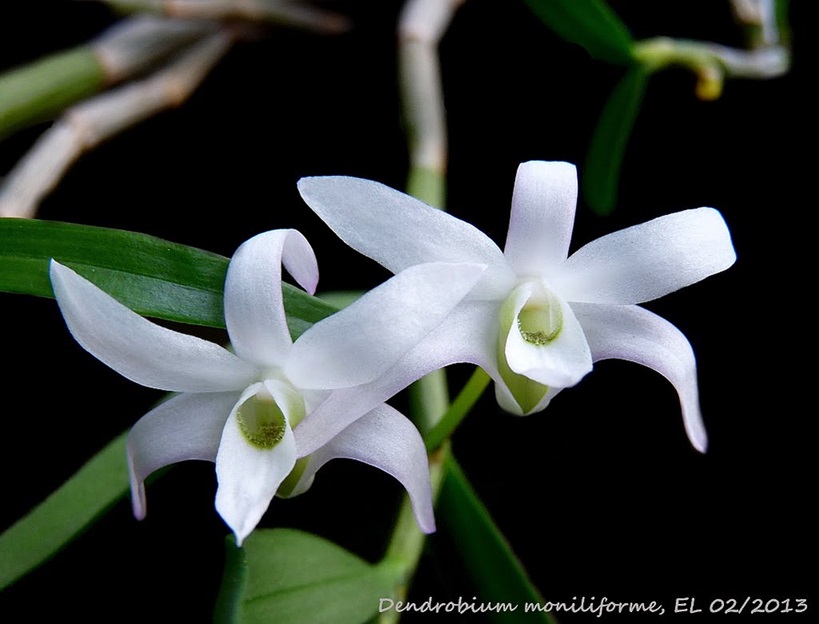
Dendrobium Ngoc Truc belongs to the Dendrobium genus
Dendrobium Ngoc Truc, with the scientific name Dendrobium moniliforme, is a species of orchid in the Dendrobium genus. It is one of the oldest cultivated orchid species and has a natural origin in East Asia, commonly found in countries such as Japan, China, and Vietnam. In Vietnam specifically, this orchid is often seen in northern mountainous provinces such as Lang Son, Ha Giang, Lai Chau, and Lao Cai.
Today, thanks to its impressive beauty, Dendrobium Ngoc Truc is widely propagated and cultivated in ornamental orchid gardens in many countries.
How to Identify Dendrobium Ngoc Truc Orchid
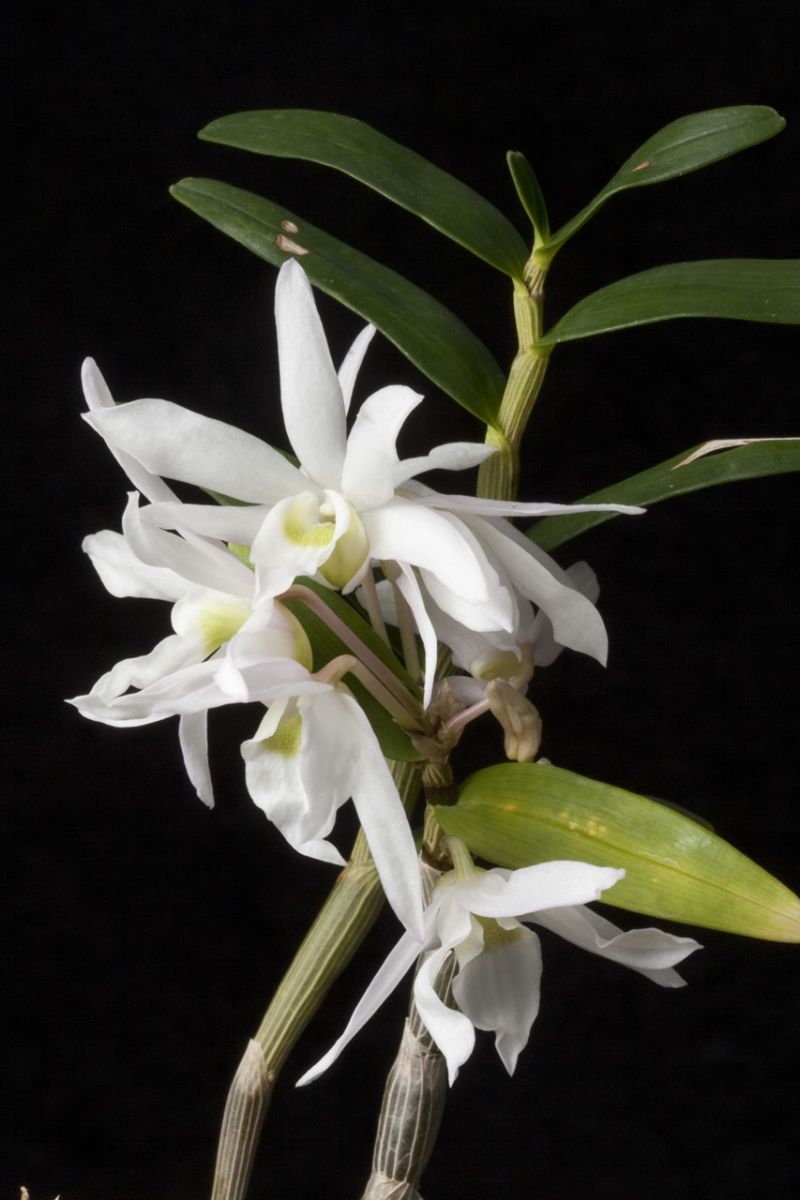
A Close Look at the Flowers, Stems, and Leaves of the Dendrobium Moniliforme Orchid
Let’s take a closer look and discover what makes Dendrobium moniliforme so visually special and why it's so beloved by orchid enthusiasts.
Stem:
-
Pseudobulbous stems with a round cylindrical shape
-
Upright or slightly curved, typically 15–30 cm in length
-
Clearly segmented, with slightly swollen nodes
-
Usually light to dark green, with a purplish hue on mature stems and vertical stripes running along the surface
Roots:
-
Fibrous roots, silvery white and aerial in form
-
Root tips are usually green or light purple
-
Strong and fast-growing root system
Leaves:
-
Alternately arranged along the stem, shaped like lance blades with pointed tips, 5–8 cm in length
-
Dark green with sunken veins
-
Leaves typically fall off in the dry season before flowering
Flowers:
-
Grow from the old leafless stem nodes, with 2–3 flowers per node
-
Each flower is about 3–4 cm wide
-
Most common colors ivory white, light pink, or pale purple depending on growing conditions
-
Petals are thin and slightly curved; the throat has soft hairs, possibly yellow or faintly purple
-
Fragrance is light, pleasant, and long-lasting
-
Blooms in spring (March–May) and lasts about 5–10 days
How to Grow and Care for Dendrobium Moniliforme for Beginners
Dendrobium moniliforme is not too difficult to grow, as long as you follow the detailed planting and care guide we've provided below. Let’s dive right in!
Preparation Before Planting
The first step in growing this orchid is to select healthy seedlings and prepare the growing medium properly.
Selecting the Seedlings:
-
Choose healthy, pest-free plants with no damage
-
Roots should be fresh and plump, not dried out
-
If using divisions from a mother plant, select ones with at least 2–3 dormant buds
-
Prefer nursery-acclimated plants over those freshly harvested from the wild for easier care
Treating the Seedlings:
-
Use sterilized scissors to trim damaged roots or yellow leaves
-
Soak in a diluted Physan 20 solution (1 ml/liter of water) or lime water for 15–20 minutes
-
Hang in a well-ventilated area for 1–2 days to allow wounds to dry before planting
Preparing the Growing Medium:
-
Suitable materials pine bark, charcoal, pumice, coconut fiber, driftwood, tree branches, or cork slabs
-
Soak the medium in lime water or diluted Physan (1 ml/liter) for 12–24 hours, rinse, and sun-dry for 1–2 days
Planting Methods
To help your orchid root quickly and grow well, follow these instructions carefully:
Potting Method:
-
Line the bottom of a ceramic or plastic pot with charcoal and treated bark
-
Place the base of the orchid upright in the center, then add more medium to secure it
-
Do not cover the base completely to allow air circulation for root development
-
Keep the pot in a shaded area; avoid direct sunlight in the first week
-
Mist lightly instead of watering directly during this period
Mounting Method (on wood or cork):
-
Place the orchid base on the mount and secure it with soft ties, zip ties, or wire
-
Add a thin layer of moss to help retain moisture but do not cover the base entirely
-
Place the mount in a breezy spot with filtered light (50–70%) and shelter from direct rain/sun
-
Do not water for the first 5 days
Post-Planting Care
-
Start watering after one week
-
After 10–15 days, once rooting begins, you can apply diluted B1 or liquid organic fertilizer
-
Continue misting lightly in the morning and late afternoon
Detailed Orchid Care Guide
Want your orchid to thrive, bloom beautifully, and retain its colors longer? Follow this comprehensive care guide:
Ideal Light & Temperature:
-
Prefers gentle light, avoids harsh direct sun
-
Optimal temperature 18–30°C (64–86°F)
-
Avoid strong wind, heavy rain, and harsh sunlight
-
Use 50–70% shade netting or grow under natural filtered shade
Watering:
-
Only water when the growing medium feels dry
-
Avoid overwatering and never water at night or midday
-
Dry season: Water 1–2 times/day depending on humidity
-
Rainy season: Reduce watering to once every 3–4 days when humidity is high
Fertilization by Growth Stage:
-
Growth phase (post-rooting): Use NPK 30-10-10 or diluted organic fertilizers like B1, humic acid, or fish emulsion at ⅓–¼ strength, spray on stems
-
Pre-bloom phase (Oct–Dec): Use NPK 10-30-10 or 6-30-30 to promote bud formation, reduce watering, increase light slightly
-
Blooming phase: No fertilization, avoid watering the flower buds, minimize movement to prevent bud drop
-
Post-bloom phase: Trim off withered spikes and apply NPK 20-20-20 + B1 to rejuvenate the plant
Disease Prevention:
-
Root rot: Trim damaged roots, apply lime or wound sealant, and hang dry
-
Leaf spot: Remove infected leaves, spray Ridomil Gold or Physan 20 every 15 days
-
Mealybugs: Wipe leaves and stems with 70% alcohol and spray with Regent or neem oil to eliminate them
Dendrobium Moniliforme Price Guide
Curious about the cost of this lovely orchid? Here’s a breakdown to help you decide:
| Type | Price Range (VND) | Notes |
|---|---|---|
| Young seedlings | 25,000–60,000 / plant | Young shoots, 15–25 cm long |
| Wild-sourced orchids | 200,000–300,000 / kg | Freshly harvested, not acclimated |
| Small clumps (3–5 stems) | 150,000–200,000 / clump | Not yet divided |
| Large clumps (7–10+ stems) | 300,000–400,000 / clump | More mature group |
| Decorative hanging pots | 350,000–500,000 / pot | Flowering or about to bloom |
Beautiful Images of Dendrobium Moniliforme
Take a look at these stunning moments we’ve captured of this elegant and rustic orchid—perhaps it’ll charm you at first sight!
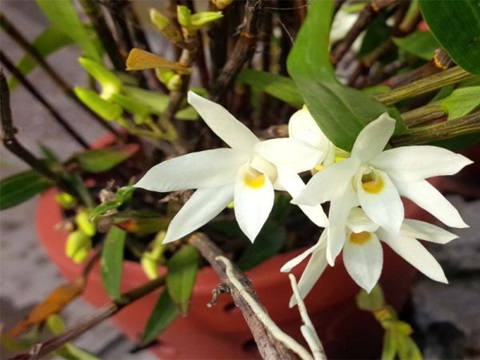
Flowers with white petals and yellow throats
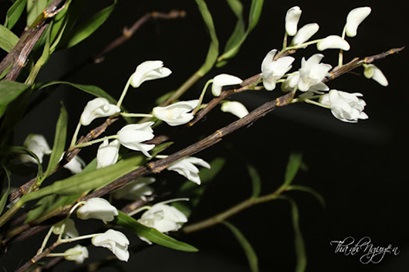
Blooms just starting to open
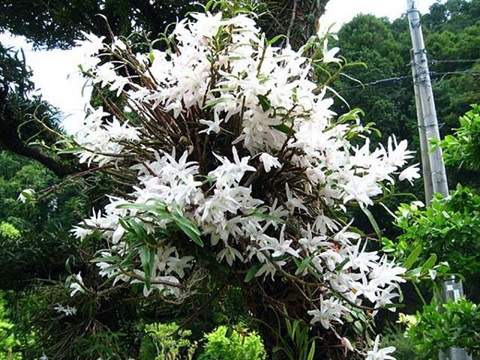
A massive clump of Dendrobium moniliforme
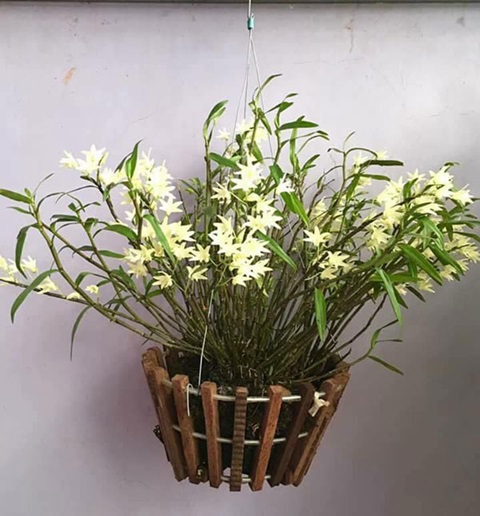
Full, vibrant displays of blossoms
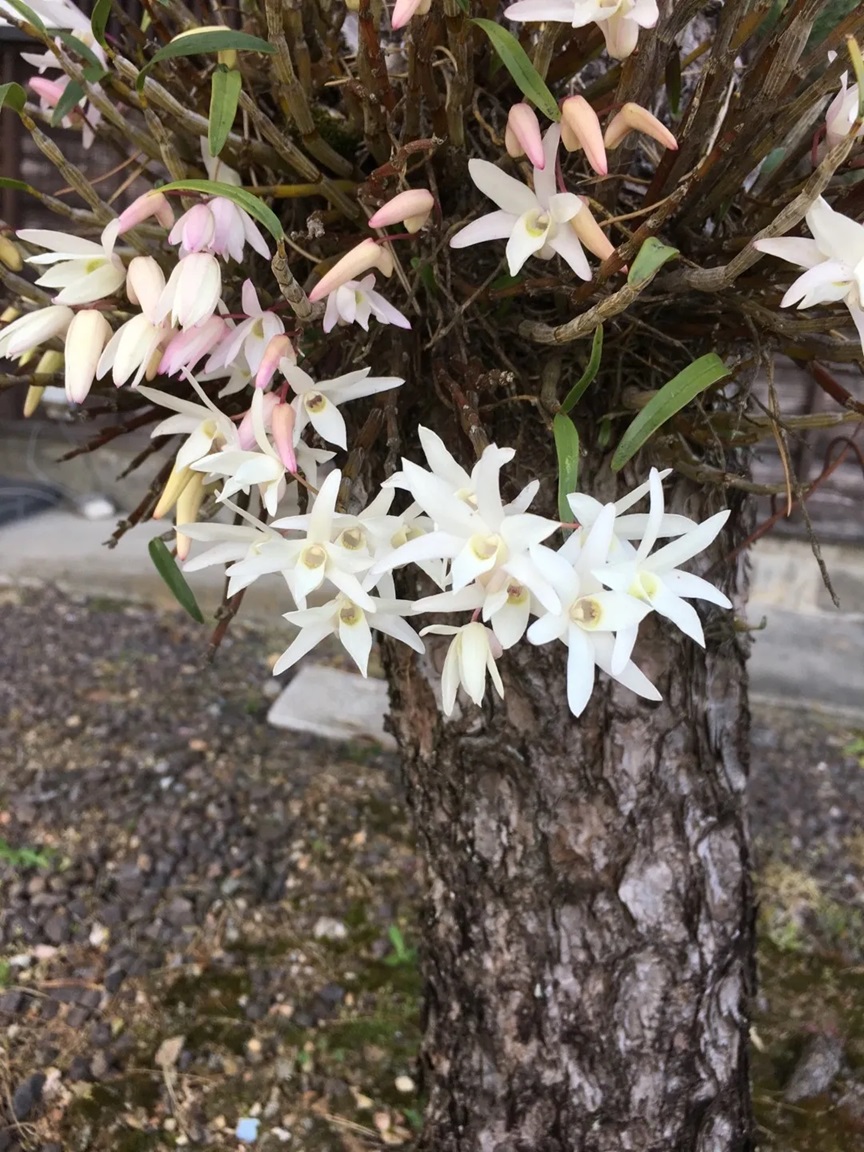
Orchids growing on wooden branches
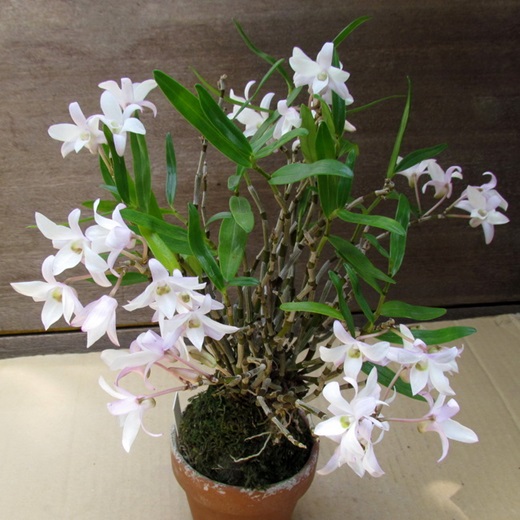
Hanging pots in full bloom
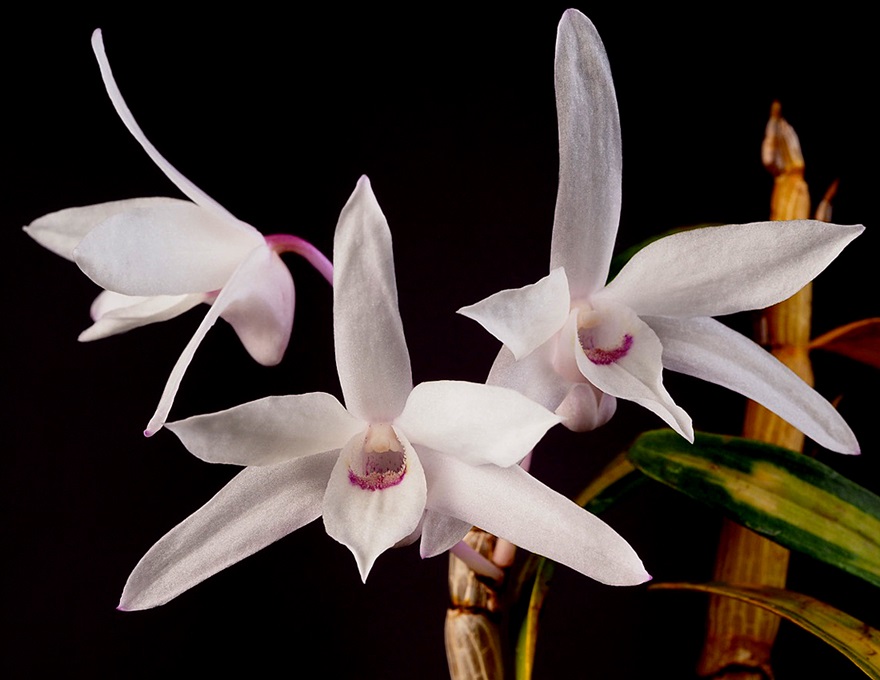
White flowers tinged with pale purple
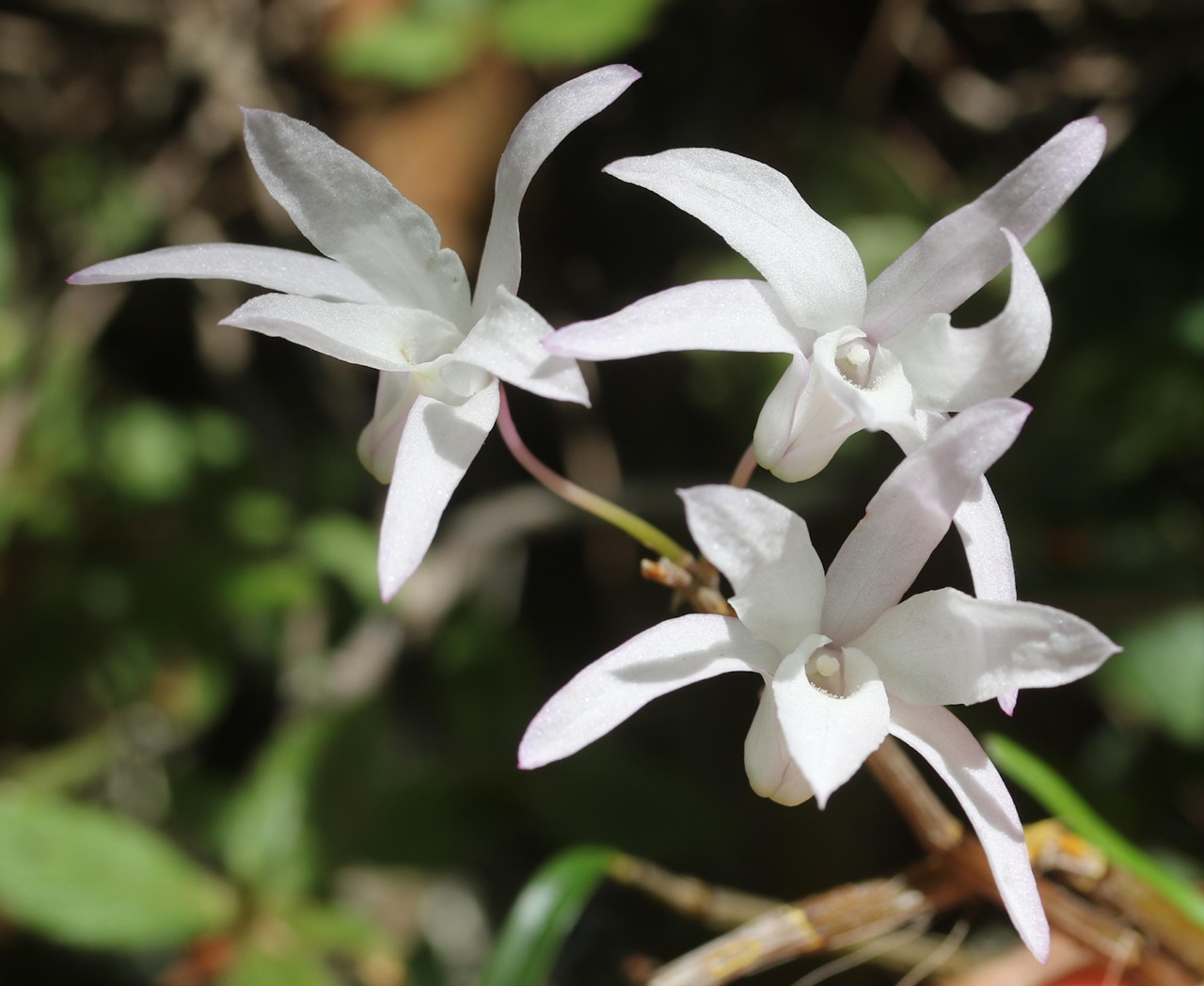
Pure white petals radiating simplicity and grace
If you love elegant and understated orchids, Dendrobium moniliforme is a wonderful choice. We hope the information from orchid-vn.com empowers you to confidently grow this beautiful species and enjoy rewarding results.
Don’t forget to explore our Blog section for even more orchid knowledge to fuel your passion for this fascinating world of orchids!
